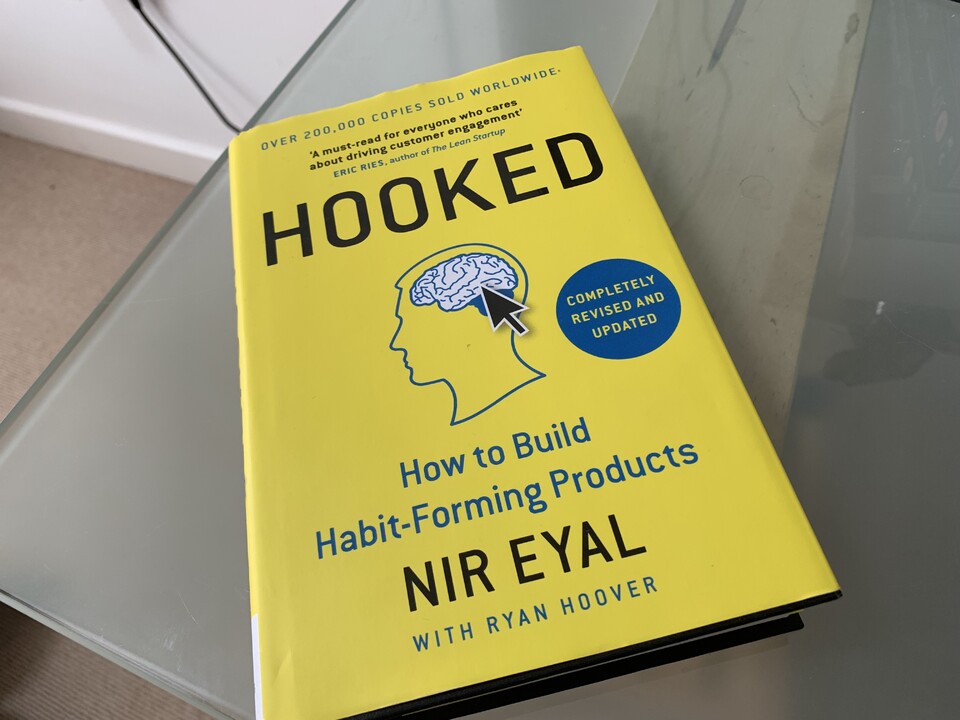Hooked by Nir Eyal is a pre-requisite read for anyone involved in product development or customer experience. It promotes a very simple but very powerful mechanism for encouraging users to build a habit of using your product rooted in psychology.
Nir explains the 4 different steps in developing and maintaining customer habits with your product.

1. Trigger
What are the internal triggers that make the user reach for your product to use it? i.e. i'm lost.. I need a map app. I'm bored, i'll check Facebook.
What are the external triggers that prompt you to use the product (emails, push messaging).
By identifying and creating new triggers we can encourage action (step 2).
For example, a push notification to say you were searching for Apple ear pods recently, their price has just dropped, click here to see. Or sending/pushing the user a healthy lunch recipe at lunchtime if the user has joined a dieting app.
2. Action
How can we make the action the user neds to perform to solve their problem as easy as possible? This is often a big differentiator between competing products. Where one product makes things easier for the user, the user will always choose the easy option.
After the user has performed the action, we then need to reward the user (step 3).
3. Variable reward
We need to reward the user for undertaking the action. We need to make it appealing to the user to continue using the app by rewarding them with the effort of their action.
Interestingly scientists have found that varying rewards is amazingly effective in making users happy. That is.. making the reward different or change over time as opposed to always rewarding the users in the same way each time which becomes repetitive and predictable.
Just as interesting scientists have found that is not the reward itself that the user is drawn to but the anticipation of the reward.
4. Investment
By investing an increasing amount of time, effort and data into your product, not only can the product use that data to become more useful but it also decreases the likelihood of a user abandoning your product for another similar one.
Heuristics and Perception
I love the 1975 scarcity study that Nir quotes where people are shown two jars of identical cookies but place higher value on cookies that are in a jar containing less and how the appearance of scarcity effects our perception of value.
Nir also describes the Framing Effect, Anchoring Effect and Endowed Progress Effect.
I also like his examples of illusions of control/agency.. for example apps that show where a taxi or delivery driver is make people a lot more comfortable waiting 20 minutes for something than if they couldn't check on the progress.
Morality
Nir talks at length about the morality of designers using this model in their products to produce a recurring habit if they are not in the best interests of the customer and asks would-be implementers to decided whether their intentions make them Peddlers, Facilitators, Dealers or Entertainers in the Manipulation Matrix.
As much as I admire and agree with Nirs focus on morality, I really don't think in reality it enters much into the minds of businesses whom are instructing product designers to create successful products.
Summary..
This is a short and pre-requisite read if you want to better build products that appeal to customers and keep them coming back by forming habits in their behaviour. How you implement the Hook Model is up to you.
This will rank quite highly on my all time favourite book list.
-- Lee
















